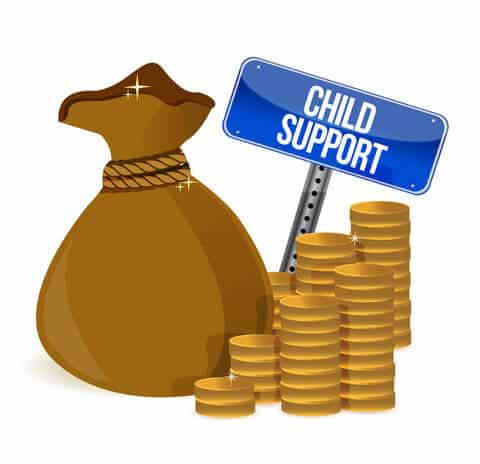Answers To Your Long Island Child Support Payment Questions
 One of the biggest concerns of divorcing couples on Long Island is the support of their children. It will come as no surprise to anyone living in Nassau County or Suffolk County, that our costs for child-rearing are among the highest in the country. So, if your children are going to be living with you (the Custodial Parent), you’re naturally concerned about how much you can expect to receive from your ex-spouse to help mitigate these expenses. And, if your children are not going to be living with you (the Non-Custodial Parent), you want to know how much of your hard-earned money are you going to have to pay to your ex-spouse for the care of your children.
One of the biggest concerns of divorcing couples on Long Island is the support of their children. It will come as no surprise to anyone living in Nassau County or Suffolk County, that our costs for child-rearing are among the highest in the country. So, if your children are going to be living with you (the Custodial Parent), you’re naturally concerned about how much you can expect to receive from your ex-spouse to help mitigate these expenses. And, if your children are not going to be living with you (the Non-Custodial Parent), you want to know how much of your hard-earned money are you going to have to pay to your ex-spouse for the care of your children.
Under New York law, parents are required to provide care for their minor children until the age of 21. As you are going through your divorce, you may be wondering how such child support is calculated and what it means to you and your soon to be ex-spouse. While the courts have discretion in some areas of determining child support, in order to keep decisions uniform, child support calculations are mainly based upon a statutory formula. The courts use what has become known as the Child Support Standards Act to guide determinations in what is a fair and reasonable amount of child support.
How Much Will I Have to Pay in Child Support Payments?
Your most pressing concern regarding child support will likely be how much you will be paying, or receiving if you are the custodial parent, per month in support. According to the Child Support Standards Act, the non-custodial parent will pay a percentage of the combined parental income, which is the combined income of both you and your soon to be ex-spouse, dependent upon how many children you or your partner have physical custody of.
If you have custody of:
- One child: 17% of the combined parental income;
- Two children: 25% of the combined parental income;
- Three children: 29% of the combined parental income;
- Four children: 31% of the combined parental income; and
- Five or more children: no less than 35% of the combined parental income.
What Sources of Income are Included in Calculating the Combined Parental Income?
Aside from the salaries you and your partner receive from your respective jobs, there are outside sources of income that are taken into consideration when calculating the combined parental income for child support payments.
Other Source of Income Include (but are not limited to):
- Worker’s Compensation Benefits
- Disability Benefits
- Pension Benefits
- Retirement Benefits
- Annuity Payments
- Social Security Benefits
Income from these sources will be included in the calculation even if you chose to defer payment. Additionally, the court has discretion to include income from money or services provided by family or friends or any benefits, including meals and automobiles, which are provided by your employer for your personal use. Furthermore, if you are entitled to payments due to extraordinary circumstances, such as a payout from a Life Insurance policy, Inheritance under a will, or Lottery Winnings, such payments will also be included in the computing of combined parental income. Therefore, it is important that you are completely candid with your divorce attorney about any possible source of income, as it is possible that income you do not expect to be included in the calculations will be.
What if I am the Custodial Parent But am Also Currently Enrolled in School?
If you have physical custody of your children, but are in the process of obtaining a diploma or degree, you may be worried about how you can afford the cost of childcare for your children. The Child Support Standards Act seeks to remediate such concerns. Therefore, if you are enrolled in school, whether it is high school, college, or vocational school, you and your soon to be ex-spouse will split the cost of child care pro-rata. Your divorce attorney will be able to provide you more guidance as to the definition of “pro-rata”.
What if the Child Support Formula Provides an Inadequate Amount of Contributions?
In certain instances, the black and white formula provided by the Child Support Standards Act will prove to be insufficient to assist the custodial parent in caring for the children. In such instances, the court has the power to order the non-custodial parent to pay any greater amount that it finds just and appropriate. In order to determine this amount, the court will take into consideration the financial resources of both the custodial and non-custodial parent, including whether the gross income of one parent is substantially less than that of the other; the child’s health, including any special needs; and whether the non-custodial parent must incur extraordinary costs for child visitation (transportation, lodging, tolls, etc.). Keep in mind however, that this is not an exclusive list, and the court may consider any outside circumstances it deems relevant.
Need More Information About Long Island Child Support?
If you have additional questions about your rights and responsibilities regarding Child Support on Long Island, please give us a call at 631-923-1910. We’ll be happy to schedule a complimentary consultation where we can sit down and discuss your questions and concerns.












